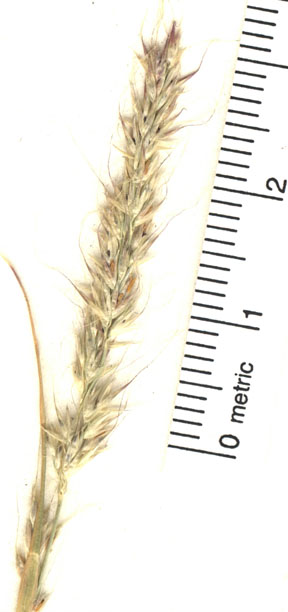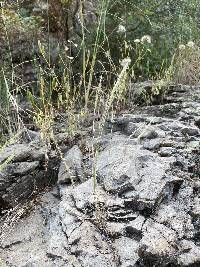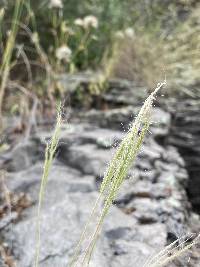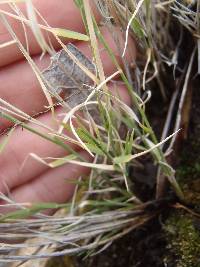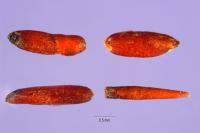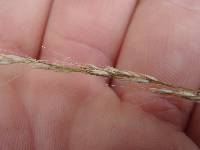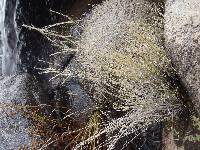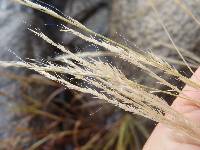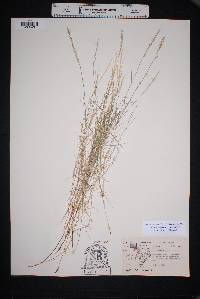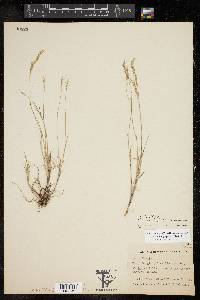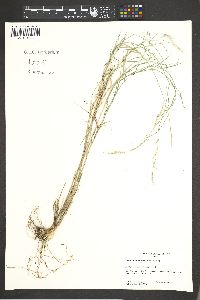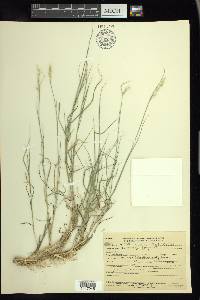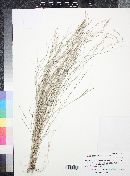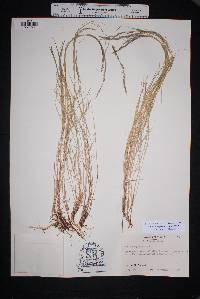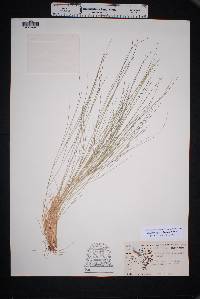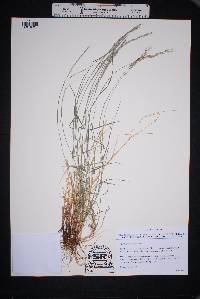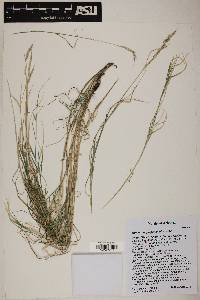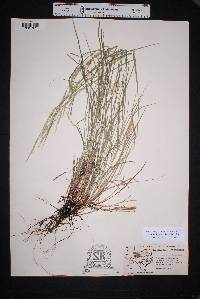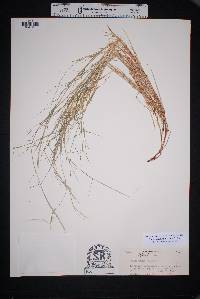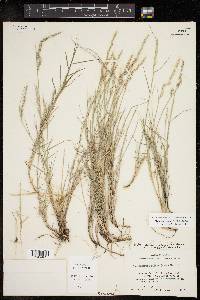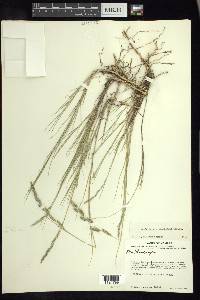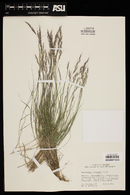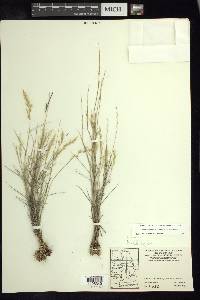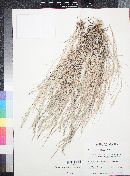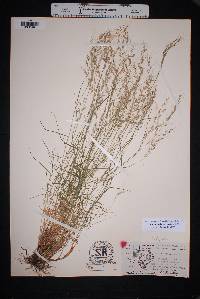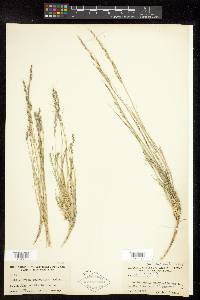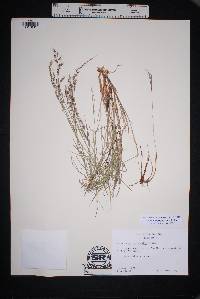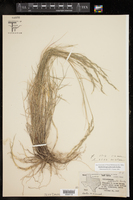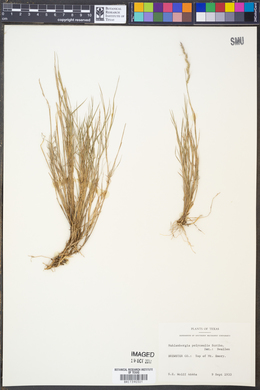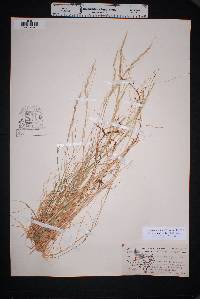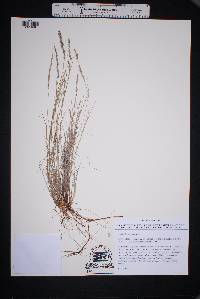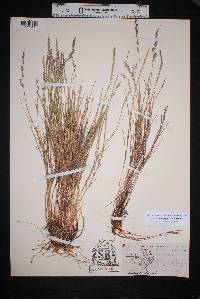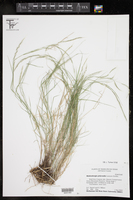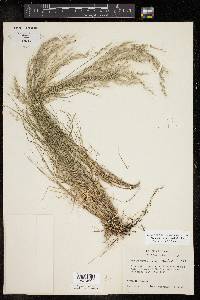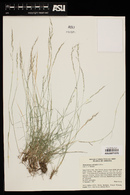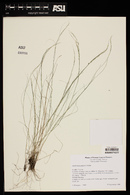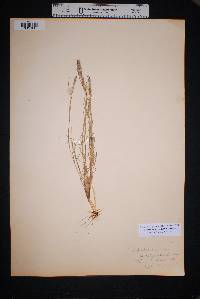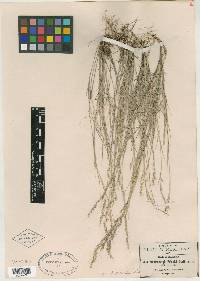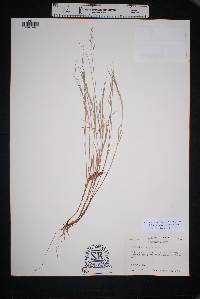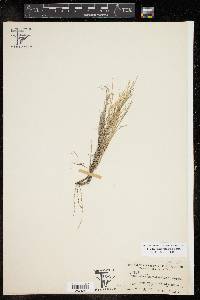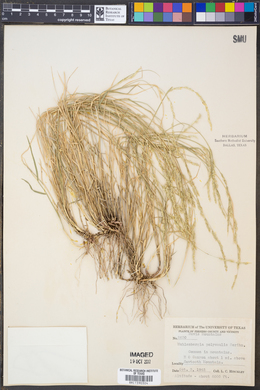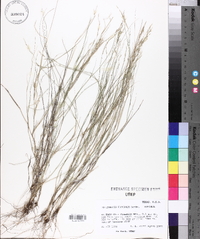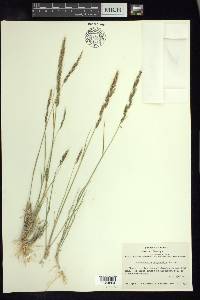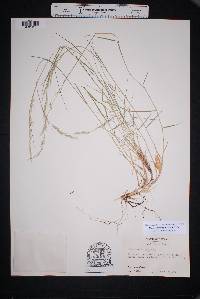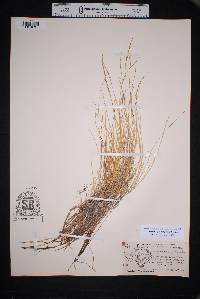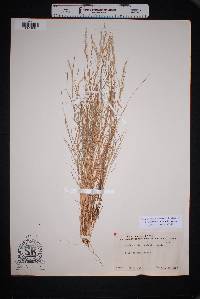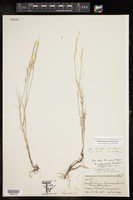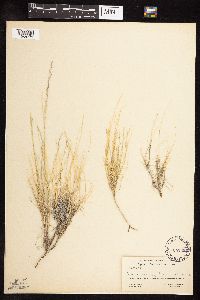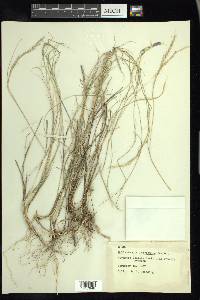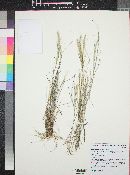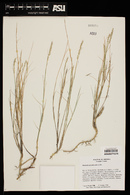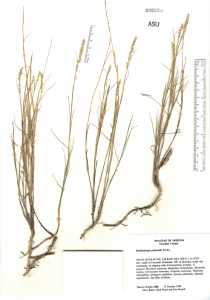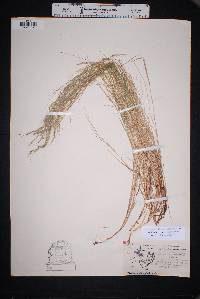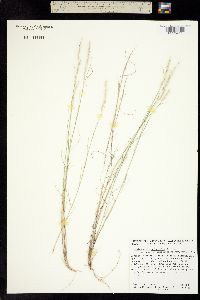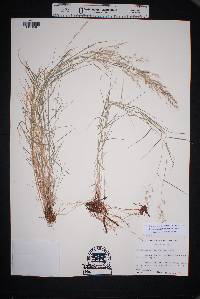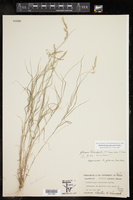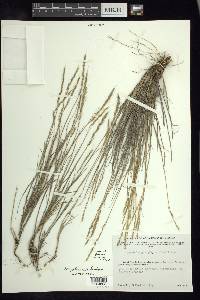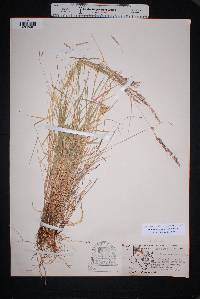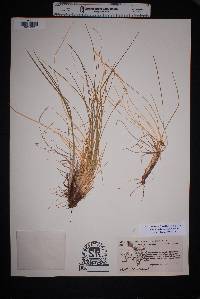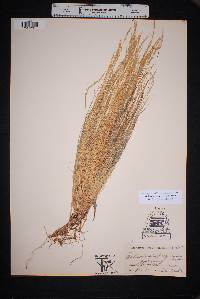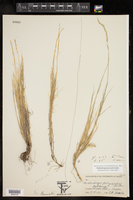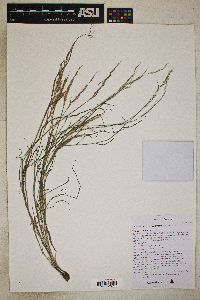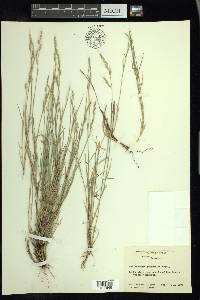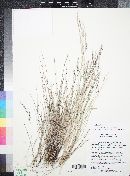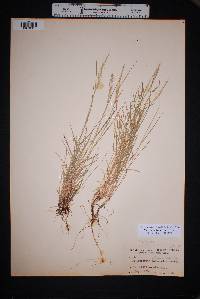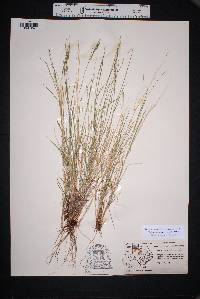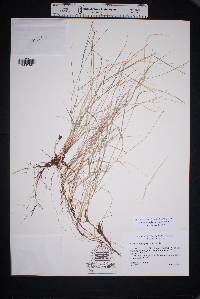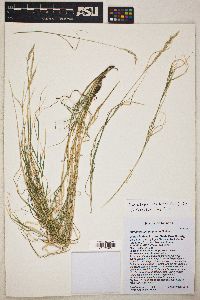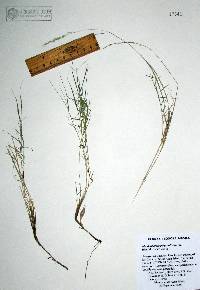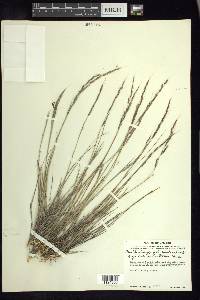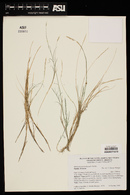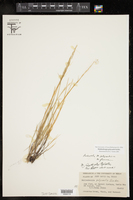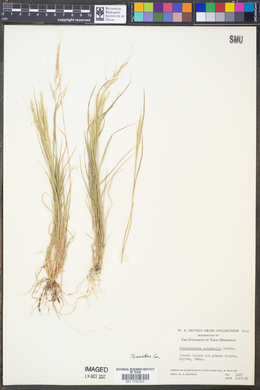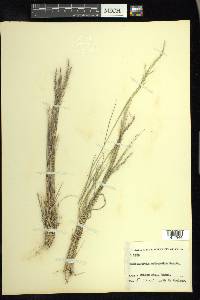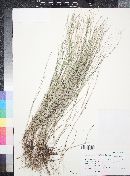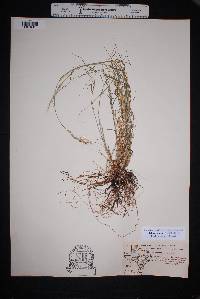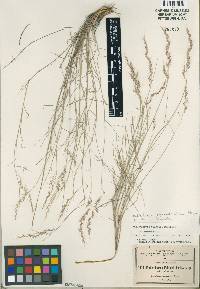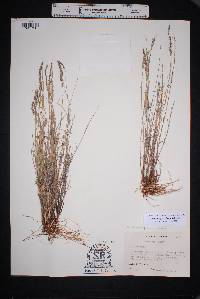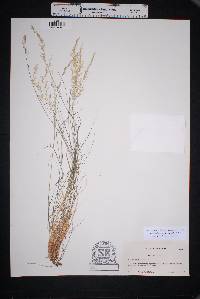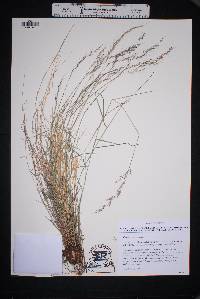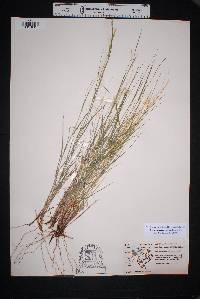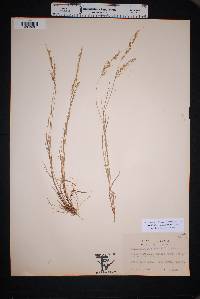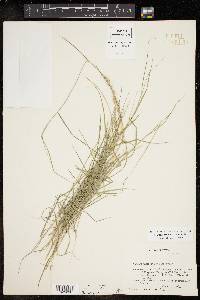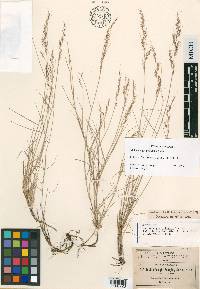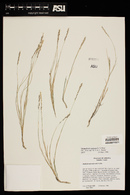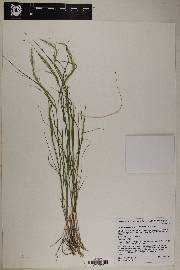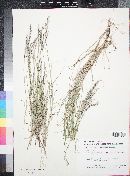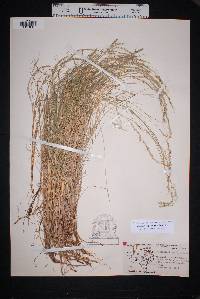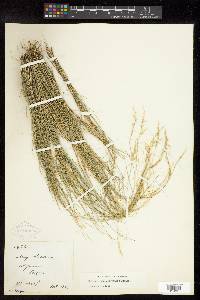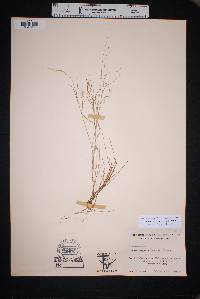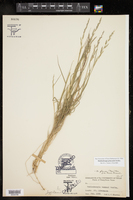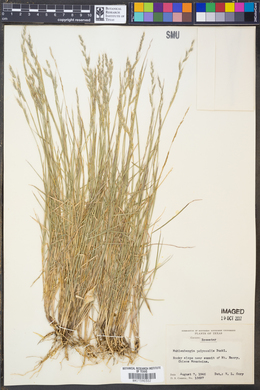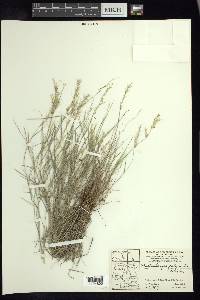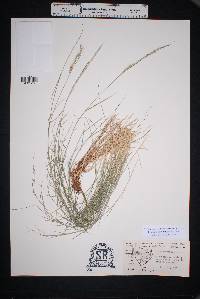
|
|
|
|
Family: Poaceae
Cliff Muhly
|
Plants perennial; loosely cespitose, sometimes shortly rhizomatous. Culms 15-40(50) cm tall, 0.8-1.5 mm thick, erect or decumbent; internodes glabrous or strigulose for most of their length, including below the nodes. Sheaths usually shorter than the internodes, smooth or scabridulous, without necrotic spots, not becoming spirally coiled when old; ligules 0.5-2.5 mm, membranous, obtuse to acute, without lateral lobes; blades 3-10 mm long, 0.5-2 mm wide, flat or involute (occasionally folded), smooth or scabridulous abaxially, hirsute or scabridulous adaxially, without necrotic spots. Panicles 2-12 cm long, 0.3-1.8 cm wide, contracted, interrupted below; primary branches 0.5-4 cm, appressed or diverging up to 30° from the rachises, spikelet-bearing to the base; pedicels 0.1-1.5 mm, scabrous. Spikelets 2.5-4 mm, plump near the middle. Glumes subequal, (1)1.5-2.6 mm, exceeded by the florets, 1-veined, acute or acuminate, unawned or awned, awns to 1.4 mm; lemmas 2-3.5 mm, elliptic, widest near the middle, appressed-pubescent on the lower 1/2-2/3 of the midveins and margins, hairs to 0.5 mm, apices scabridulous, acuminate, awned, awns 10-20(25) mm, flexuous; paleas 2-3.5 mm, elliptic, intercostal region appressed-pubescent on the basal 1/2, apices acuminate; anthers1.5-2 mm, orange. Caryopses 1.5-2 mm, fusiform, brownish. 2n = 20, 40. Muhlenbergia polycaulis grows in open vegetation on steep rocky slopes, canyon walls, cliffs, table rocks, and volcanic rock outcrops, at elevations of 1200-2400 m. Its range extends from the southwestern United States to central Mexico. It differs from M. glauca, with which it may be confused, in its longer lemma awns, shorter rhizomes, and loosely tufted habit. FNA 2003, Gould 1980 Common Name: cliff muhly Duration: Perennial Nativity: Native Lifeform: Graminoid General: Loosely tufted perennial from a hard base of short, scaly rhizomes, stems erect or decumbent, 15-40 cm tall, 0.5-1.5 mm thick, glabrous or strigulose internodes, sheaths glabrous to scaberulous. Vegetative: Blades 3-10 mm long, 0.5-2 mm wide, flat or involute, occasionally folded, smooth or minutely roughened below, hirsute or minutely roughened above, without spots, ligules 0.5-2.5 mm, membranous, obtuse to acute, without lateral lobes. Inflorescence: Densely flowered contracted panicles 2-12 cm long, 0.5-2 cm wide, interrupted below, primary branches 0.5-4 cm, appressed or diverging to 30 degrees from the rachises, spikelet bearing to the base, spikelets 2.5-4 mm, plump near the middle; glumes subequal abruptly acuminate to aristate, 1.5-2.5 mm, exceeded by the florets, unawned or awned with awns to 1.5 mm; lemmas 2-3.5 mm, elliptic, widest near the middle, appressed pubescent on the lower half to two thirds of the midveins and margins, hairs to 0.5 mm, minutely roughened apices, awned with awns 10-20 mm, flexuous. Ecology: Found in open sites on steep rocky slopes, on canyon walls, cliffs and rock outcrops from 4,000-8,000 ft (1219-2438 m); flowers August-October. Notes: Can be confused with M. pauciflora and M. tenuifolia but is actually very similar to M. glauca. Told apart from the first two its hard, knotty rhizomatous base. Told apart from the latter by its longer lemma awns, shorter rhizomes and loosely tufted habit. Ethnobotany: Unknown Etymology: Muhlenbergia is named for Gotthilf Heinrich Ernst Muhlenberg (1753-1815) a clergyman and botanist from Pennsylvania; polycaulis means many stemmed. Synonyms: None Editor: SBuckley, 2010 |

